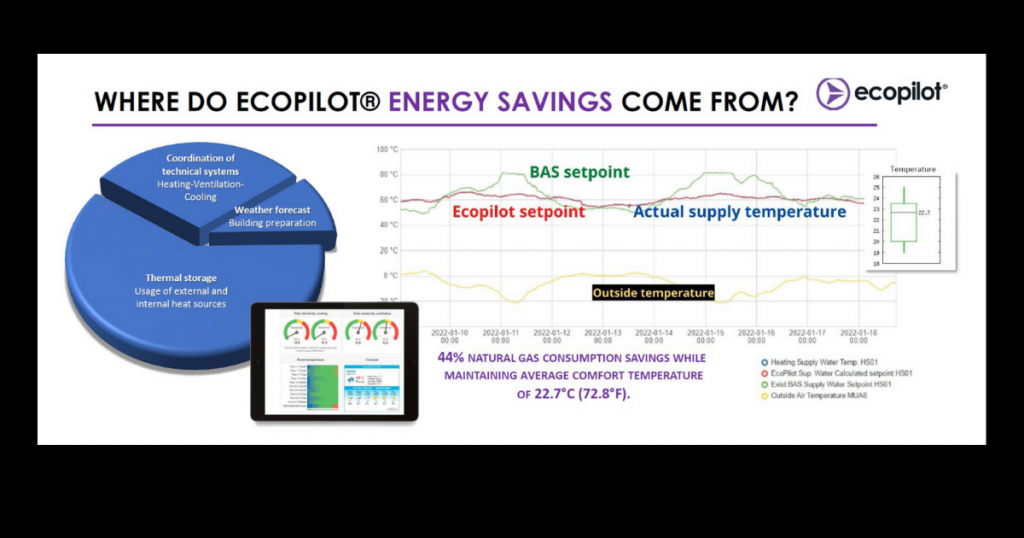ECOPILOT IN ACTION

Let’s break this graph down. It’s freezing, it’s mild, the sun is out, it’s warm, now it’s bitterly cold. Wait! It snowed, it rained, it’s mild again. Yup. This is Toronto, Ontario for the week of January 10-18. How does your Building Automation System (BAS) react during these weather variations?
This is Ecopilot® in action.
The existing BAS (in green) is reacting to an outside air reset that trigger regular adjustments. The problem is that hourly outside temperatures aren’t stable and cause the BAS to overreact which causes over heating, or sometimes adding cooling, or doing both at the same time. The BAS doesn’t account for thermal properties that impact the building.
Ecopilot® (in red) is looking ahead at weather and proactively preparing the building for energy demand. It’s calling for supply temperature offsets far below what the BAS is calling for and as a result, actual water supply heating temperature remains constant (in blue).
Most importantly, indoor comfort range for the building was an average of 22.5oC. Energy savings while maintaining, and even improving, tenant comfort.
Here’s why:
Thermal mass is often forgotten about but has huge potential effects on indoor temperature. It’s like a huge cushion that can store, and release energy based on outdoor temperature changes. Harnessing a buildings unique thermal mass allows Ecopilot® to understand periods when heat loss and heat gain are balanced. This balance point temperature is communicated to the BAS helping it to introduce heating and cooling only when necessary.
In addition to the thermodynamics properties of the building, which remain static, Ecopilot® also uses the collection of real-time data to assess other fluid variables, like weather, people, and heat generated from solar radiation, or machines, that is also stored in the building and released over time.
Ecopilot®’s AI collects this real-time data to automatically and continuously optimize building energy requirements. Every 2-minutes, its algorithm calculates a buildings balance point temperature and factors in real-time data while harnessing thermal mass to offset the original BAS setpoint resulting in a new supply temperature eliminating overreactions, prioritizing free energy, and anticipating building energy requirements. The result? HCAC efficiency savings of up to 40% annually and comfortable building occupants.